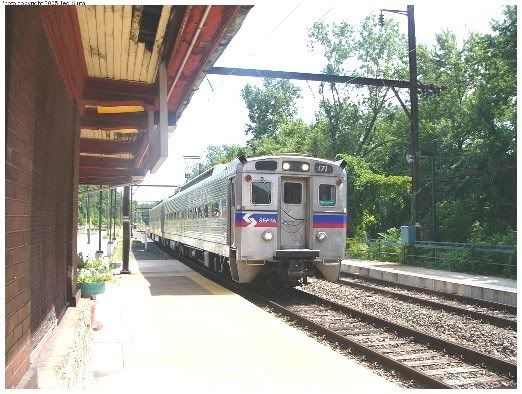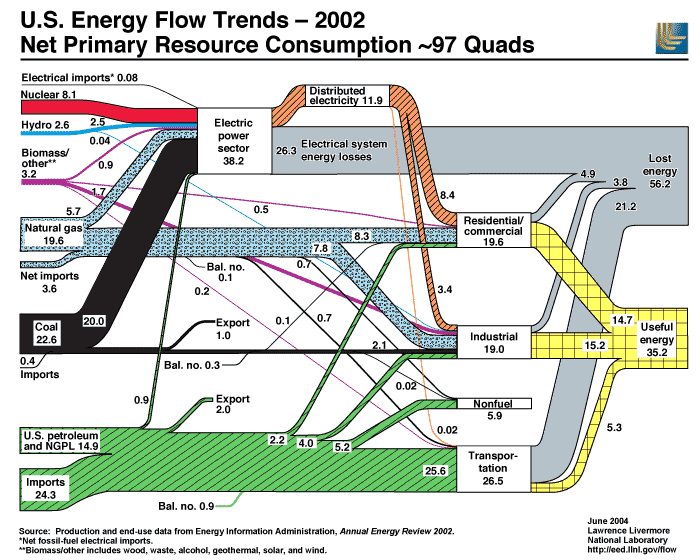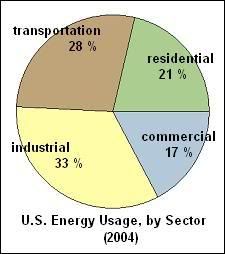(noon. – promoted by ek hornbeck)
Burning the Midnight Oil for Living Energy Independence
 In his inimitable “twisting mainstream economics in as progressive direction as he can accomplish” style, Paul Krugman has made a splash among those following the challenge of our headlong and reckless pursuit of Climate Chaos with a column on the cost of policies to put the brakes on that reckless gamble.
In his inimitable “twisting mainstream economics in as progressive direction as he can accomplish” style, Paul Krugman has made a splash among those following the challenge of our headlong and reckless pursuit of Climate Chaos with a column on the cost of policies to put the brakes on that reckless gamble.
Hat tip to A Siegal, who nailed a critical failing of Krugman’s analysis:
Krugman falls into the trap of discussing the costs of dealing with climate change … a robust cost/benefits analysis would … result in a very serious statement as to the “huge risks and costs of inaction vs the very serious benefits of action”.
In particular, it is a common failing of mainstream economics to assume an economy that naturally tends to full employment, so that policies that boost employment are a cost, when in the real world they are a benefit.
Of course, the oil-industry funded belief tanks will be promoting the idea that Krugman is overstating the case for taking action against climate chaos … when the reality is that he overstates the cost to the public of taking action and so understates the case for taking action.
The Problem of Intellectual Silos
As A Siegel says earlier in his essay:
While high quality in their own way, the CBO (and many other institutions) operates with a set of constraints that lead them to do stovepiped analysis that is overly pessimistic.
The link here is to an earlier piece by A Siegel, from June of 2009, “CBO’s good news re Climate Legislation is significantly understated”. The undercounting of benefits is systematic, in that it is clear that benefits exist which the CBO does not even try to estimate when evaluating the economic impact of policies to reduce CO2 emission. Consider all the things that the CBO simply omits, as if their economic impact is zero, although we know that they are in fact benefits:
Very simply, if anything, the CBO scoring is overly negative since it doesn’t consider systems-of-systems implications.
- Job creation and, therefore, lowered governmental services demand: not in the calculation. (Trading imported oil for jobs building up an electrified rail network, for example …)
- Economic implications of climate change – and the avoided costs due to reduced pollution: not included.
- Health care benefits (to federal budget and otherwise) due to reduced fossil fuel pollution: not included.
- Increased productivity due to better health and better working conditions: not included.
- The analysis didn’t even include the bill’s strong energy efficiency provisions, which are direct cost savers.
What Does This Have to Do With Trains?
This is the Sunday Train, so I am not writing to focus on the full range of beneficial public investments that can reduce the obscene energy gluttony of the US economy, but rather to focus on the contributions that rail can make.
 The Christmas after the election, I wrote a series of three diaries, written as if they were addressed to Vice President-elect “Amtrak Joe” Biden:
The Christmas after the election, I wrote a series of three diaries, written as if they were addressed to Vice President-elect “Amtrak Joe” Biden:
- Dear Joe, I want an Electric Train for Christmas (Pt. I)
- Dear Joe, I want a High Speed Electric Train for Christmas (Pt. II).
- Dear Joe, I want a Sustainable High Speed Electric Train for Christmas (Part 3)
A key part of the third part of the series that I have not stressed recently is:
What About Sustainable Power?
It could be claimed that the electrification of STRACNET is from “60% to 95% sustainable”, based on energy saving over diesel rail freight and diesel road freight. However, we can go further than that.
The US DoE publication, 20% Wind Energy by 2030 discusses the requirements of generating 20% of the nation’s electricity by harvesting wind power. Chapter 4 (pdf) of the report covers “Transmission and Integration into the U.S. Electric System”.
One common misconception about large scale roll-out of wind-power is the idea that somehow the variability of each wind turbine must be balanced, using some form of energy storage, to create a manageable system. However, at 20% energy penetration, this would be a massively wasteful approach:
Some suggest that hydropower capacity, or energy storage in the form of pumped hydro or compressed air, should be dedicated to supply backup or firming and shaping services to wind plants. Given an ideally integrated grid, this capacity would not be necessary because the pooling of resources across an electric system eliminates the need to provide costly backup capacity for individual resources. Again, it is the net system load that needs to be balanced, not an individual load or generation source in isolation. Attempting to balance an individual load or generation source is a suboptimal solution to the power system operations problem because it introduces unnecessary extra capacity and an associated increase in cost. Hydro capacity and energy storage are valuable resources that should be used to balance the system, not just the wind capacity. (pp. 80-1)
The greater the number of wind turbines operating in a given area, the less their aggregate production variability. (p. 89)
Similarly, as more wind turbines are installed across larger geographic areas, the aggregated wind generation becomes more predictable and less variable. The benefits of geographical diversity can be seen in Figure 4-8, which shows the change in wind plant hourly capacity factor over one year for four different levels of wind plant aggregation. This figure shows the operational capacity factor of wind turbines aggregated over successively larger areas-first over southwest Minnesota, then across southwest and southeast Minnesota, then across the entire state, and finally across both Minnesota and central North Dakota. There is a decrease in the number of occurrences of very high and very low hourly capacity factors in the tails of the distribution as the degree of aggregation increases. A considerable benefit is also realized across a broad mid-range of capacity factors from 20% to 80% (EnerNex 2006). (p. 90)
There are, therefore, two distinct transmission requirements for Wind Power. The first is the problem of “Stranded Wind”, where a major wind resource area has far more wind resource than local electricity demand. The second is the problem of interconnecting consuming grids to permit load balancing across a wider area.
One of the problems, of course, is:
Local opposition to proposed transmission lines is often a major challenge to transmission expansion. An AC transmission line typically benefits all users along its path by increasing reliability, allowing for new generation and associated economic development, and providing access to lower-cost resources. Local owners, however, do not always value such benefits and frequently have other concerns that must be addressed. (p. 99)
Which points to the third piece of the plan. Rail lines tend to go to places where people live. And, being ground transportation, transcontinental rail lines have to pass through areas where no so many people live.
And if we are electrifying STRACNET, that means that there will be capital works proceeding all along those rail corridors, bringing project management and work crews all along the rail lines being constructed.
And unlike many property owners, the owner of the right of way would have a direct stake in the provision of transmission corridors, since the railway will be an electricity consumer, once the railway line has been electrified.
Now, railways rights of way do not not always provide the straight as an arrow alignment that would be preferred for a transmission line. However, they do provide one owner to negotiate with, rather than hundreds or thousands, which owner will also be an electricity consumer, and substantial opportunities to share construction and project management costs.
So the third piece of this puzzle is the public rail electrification authority offering the air space over rail right of way for use in providing the Electricity Superhighways that are part of the expansion of wind generation capacity in the US.
Without exports, and even with the conservative target in the the wind power component alone can employ 180,000 people directly, nearly 300,000 including immediate indirect employment impacts and 500,000 when considering the full employment multiplier.
But that is also stovepiped. Omitted are the Keynesian multiplier benefit of reducing our energy imports. Also omitted are the potential direct, indirect and Keynesian employment benefits of establishing an export industry for wind turbines … making up the massive ground that we conceded under Reagan since we led the industry in the 1970’s.
 Now, half a million in employment is not an answer on its own … but nothing is ever an answer on its own. Indeed, searching for “silver bullet” solutions that solve all problems is part of the problem, rather than part of the solution.
Now, half a million in employment is not an answer on its own … but nothing is ever an answer on its own. Indeed, searching for “silver bullet” solutions that solve all problems is part of the problem, rather than part of the solution.
One-fifth of our electricity supply for one form of renewable power by 2030 would be, on our present energy mix, about one-fifteenth of our total useful power consumption. There are two ways to increase this portion:
- Increase the Numerator – that is, provide a larger share of power from sustainable, renewable energy sources; and
- Shrink the Denominator – that is, do the things we do in a way that consumes less energy.
The Employment Impacts of Not Doing Something
 We normally think of “not doing something” as being the zero baseline – not doing something consumes no labor. But that assumes that “doing something” generates employment. What if “doing something” kills employment? Then “not doing” that thing would be an employment generator.
We normally think of “not doing something” as being the zero baseline – not doing something consumes no labor. But that assumes that “doing something” generates employment. What if “doing something” kills employment? Then “not doing” that thing would be an employment generator.
And of course, using imported energy is an employment killer. It increases our import spending, which makes our trade deficit worse, which acts as a drag on total demand for US production, which kills employment.
Looking at the bottom of the Energy Flow Chart, our Transport sector is where the job killing is most heavily concentrated. 25.6 quads of petroleum energy consumed, 0.1 quad of biomass/other (mostly ethanol), 0.7 quads of natural gas, and 0.2 quads of electricity, so basically 96% of our energy in transport comes from petroleum, which means that over half of the energy we consume in transport is job killing energy.
Of course, with 60% energy saving in converting diesel trains to electric, and 90%+ energy saving in shifting diesel truckload freight to electric train, there is a net reduction in CO2 emission even if the power is provided by coal. However, a much stronger impact in reducing CO2 emissions can be provided if the new electrical energy required is provided by expanding sustainable, renewable power sources. Indeed, the Line Development Banks can, for example, be chartered to acquire sustainable, renewable power whenever it is available.
These impacts – direct CO2 reduction and Keynesian job creation through reduction of our addiction to spending money on energy imports – are by no means limited to the Steel Interstate. Passenger Express HSR projects like the California HSR project offer the opportunity to shift especially intensive short-haul air travel to ground travel at up to 220mph power by non-emitting sustainable, renewable power sources. Electric local rail offers similar benefit, replacing passenger car transport consuming petroleum as well as valuable farmlands eaten up by the sprawl created by the massive spatial demands for roadways and parking … and electrification also reduce the operating cost of the rail system, improving the financial viability of hard pressed local transit systems.
But Can We Afford It? Deficit Errorism on the March
The question that is raised by the defenders of the petroleum industry is whether we can afford the cost of any of these projects. The is the same petroleum industry which benefits from the same oil addiction that kills employment and has actively fought against the energy self-sufficiency that was once a cornerstone of what was once national security, a cornerstone of national security which Reagan and followers crumpled up and tossed into the dustbin of history …
It is, however, the status quo that we cannot afford.
Consider the genuine economic costs of any project. They are labor employed, equipment employed, and natural resources. We have been a less-than-full employment economy ever since Reagan entered the White House determined to ensure the slack labor markets that are the breeding ground for union. The idea that we cannot “afford” the labor resources required to retrofit our transport system in particular or our economy in general to be more energy efficient, and the labor resources required to shift our energy consumption to sustainable renewable sources, is absurd.
So, what about equipment? Equipment is like the economy’s muscle … use it, or lose it. If we are short of the capacity to produce wind turbines, for example, there is nothing that is going to be gain by not installing wind turbines. Quite the opposite: start a steady, reliable, long term program of installing wind turbines, and that will give manufacturers the incentive to invest in manufacturing capacity in the United States.
The same applies to high speed freight and passenger rail equipment. We do not manufacture it because we do not use it. The way to establish (or, to a certain extent, re-establish) the industry is to start buying the products.
So the real bottleneck is the natural resource demand. And the focus of the win-win projects that provide the benefits that the CBO type analyses overlook are efficiency gains and harvesting domestic sustainable resource presently going untapped. These projects are not net consumers of natural resources – they either free up natural resources presently being wasted, or generate new natural resources to replace resources presently being imported.
The suggestion that we cannot afford these projects as an economy is quite literally insane. It is confusing the map, the system of flows of government-chartered money, for the terrain of actual resources that have to be used to build these projects.
The Headliners: Midnight Oil / Blue Sky Mine
My gut is wrenched out
it is crunched up and broken
A life that is led
is no more than a token
Who’ll strike the flint upon the stone
and tell me why
If I yell out at night
there’s a reply of bruised silence
The screen is no comfort
I can’t speak my sentence
They blew the lights at heaven’s gate
and I don’t know whyBut if I work all day at the blue sky mine
(There’ll be food on the table tonight)
Still I walk up and down on the blue sky mine
(There’ll be pay in your pocket tonight)

3 comments
Author
.. and buy as many belief tanks as they wish, but its only our decision to not organize against them that will allow them to win and the nation to lose … as Queen Latifah says …
… making work to go to.
Hence the neocon’s fight against better fuel standards and for higher fossil fuels consumption, as a supposed excuse for preserving work and jobs, is so much bunk.
Am I getting it?
Ditto, agree on the understatement by Krugman, but he’s just trying to pitch it, I think, in Republican framing to see if it would be more attractive that way.
Now if I could just weave the word “tax reduction” into it and shorten it further, I could catch the attention of the general public.